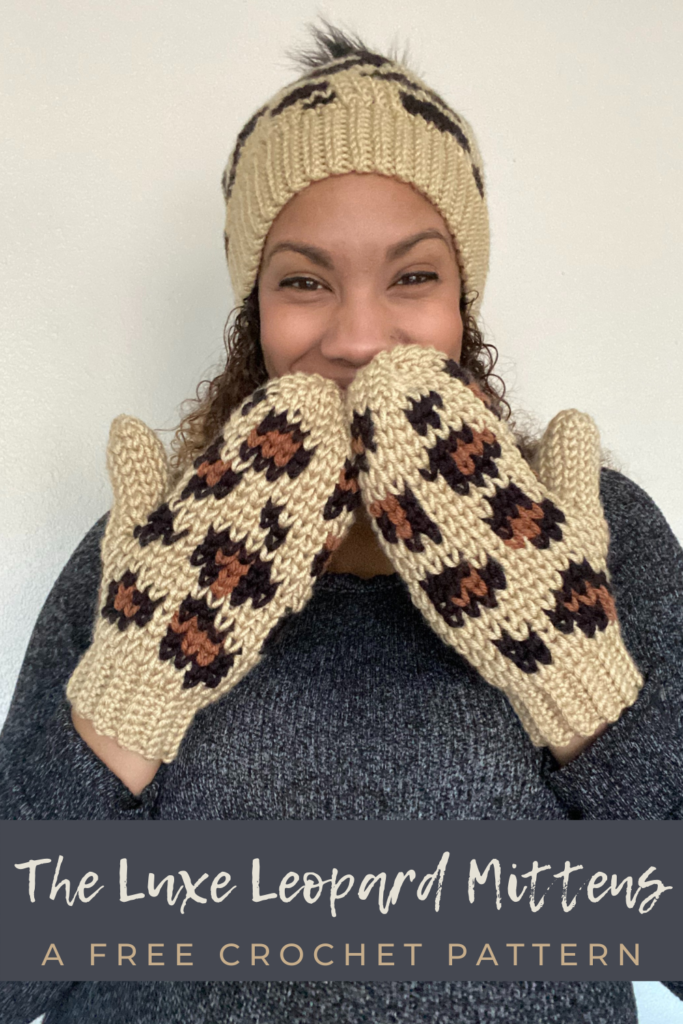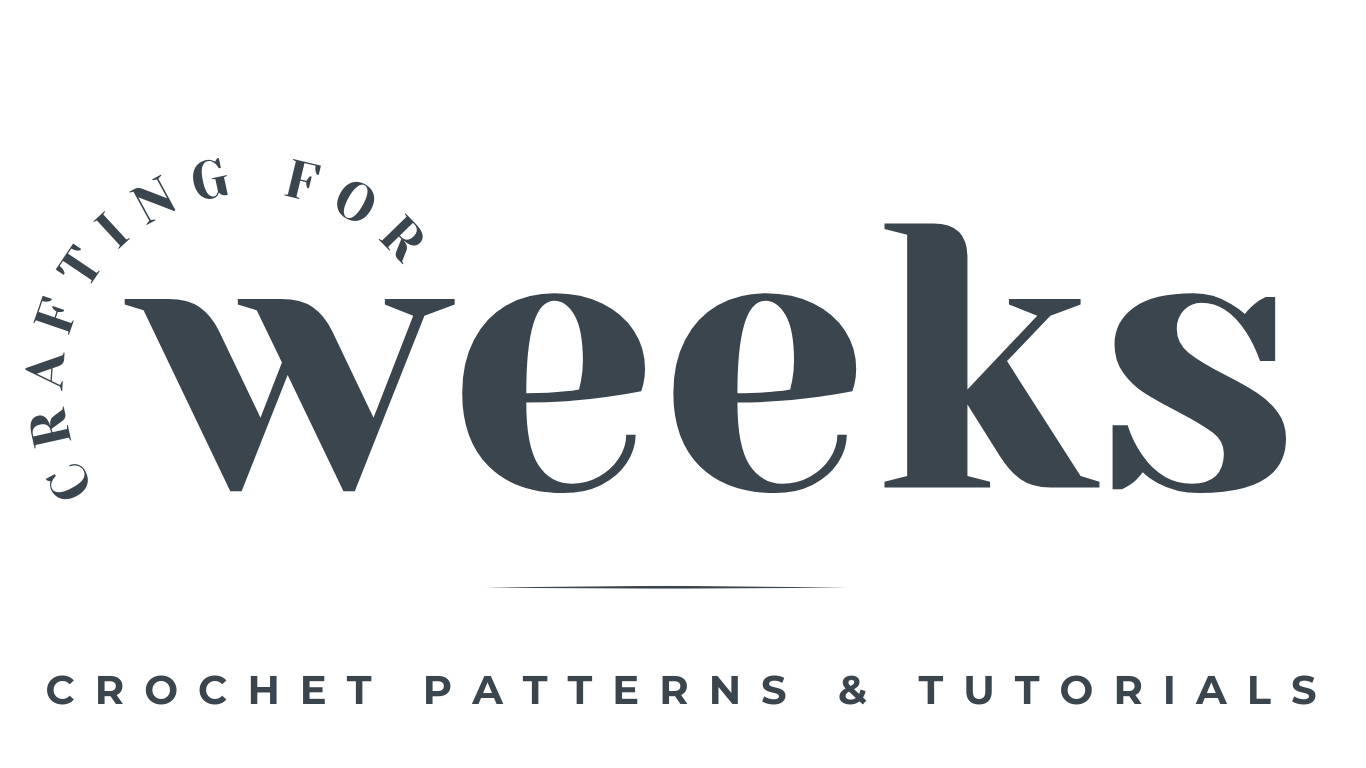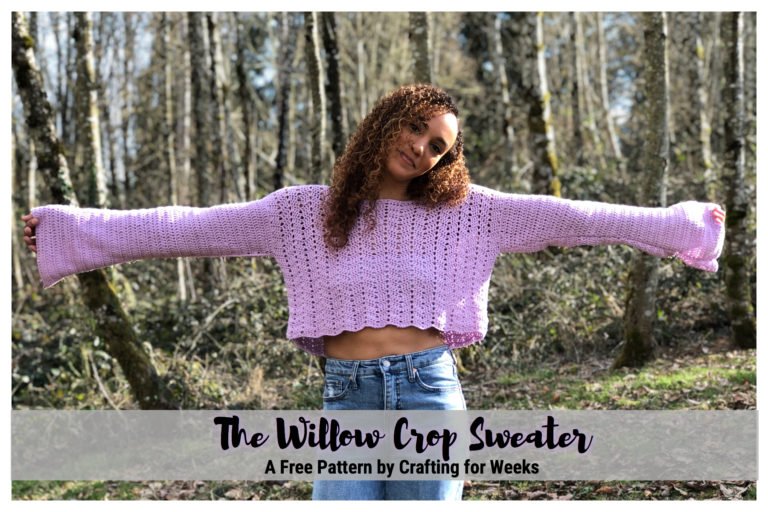The Luxe Leopard Mittens: A Free Crochet Pattern
Leopard Print Mittens!!! I know you probably already know that if you’re reading this post, but I’m still so happy with how this project came out. I’ve been so excited to share the Luxe Leopard Mittens pattern with you all! Ever since I debuted the first photo of them on my Instagram page, it’s been my highest performing post ever. So I know many of you are excited to make these mittens as well. While this is a pretty simple pattern, I tried to make lots of notes so you can adjust this pattern to fit your needs.
The following is a free pattern available for use on my website, if you would like to purchase a detailed, ad-free PDF version of the Luxe Leopard Mittens please visit my Etsy or Ravelry shop. All rights reserved.

**This site contains affiliate links to products. I may receive a commission for purchases made through these links. This is a great way to support my small business AND get the supplies you need for your project!**
About the Mittens
As I mentioned above, while this mitten pattern may look complex, it is pretty straightforward. Like most of the Luxe Leopard patterns this pattern uses waistcoat stitch and works from a graph. I designed these mittens in adult size, but since it’s single crochet they’re pretty easy to adjust to fit your needs.
I also had a few testers try their hand with a fingerless version. This modification is also pretty simple to adjust to fit your hands. And I just couldn’t help myself with adding a little extra something in the final editing process…texting holes! I worked in some little escape hatches for your fingers if you’d like to make the full mittens but also like to play with your phone.
About the Yarn
This pattern can be made with either bulky (5) or worsted weight (4) yarn. I wanted these to be able to be worn with either the Luxe Leopard Beanie in Bulky or the Luxe Leopard Beanie in Worsted so I included stitch counts for both yarn weights.
For the bulky version, I used Lion Brand Color Made Easy as my main color and contrasting color. Since I did these in tri-color, I also added a bit of Brava Bulky from WeCrochet as my accent color. If you opt not to use three colors, I recommend substituting the accent color for the main color.
For the worsted version, I used Brava Worsted yarn from WeCrochet. This is one of my go-to yarns for projects like this as it’s pretty budget friendly and comes in so many colors. My testers used a variety of different worsted weight yarn brands, so I don’t think you’ll have too much trouble finding a yarn to match gauge.
Special Techniques
For this project, we will be using tapestry crochet and the waistcoat stitch. I’ll give you a quick breakdown of each in case you’re new to these techniques. And I’ll also link you to some great tutorial videos to help you get started.
Waistcoat Stitch
Waistcoat stitch is a variation of single crochet. The main different is that instead of working under the loops of the stitch below, you will work between the posts. This creates a knit-look effect with the stitches. Since you’re working between the posts, its important to keep your tension loose. If you’re tension is too tight, you’ll have a hard time getting your hook into the stitch. Going up a hook size or two is always a great option to help loosen up your tension.
If you’re brand new to waistcoat stitch, check out this video tutorial from Make & Do Crew.
Tapestry Crochet
There are several different approaches to color work in crochet. For this project we will be carrying our yarn. That means while we are crocheting with one color, we will hold the unused color or colors along the base of the row and wrap the stitches around the unused yarn.
We will be working in the round for this project, so at the beginning of every round we will start the graph over at Column 1 of the next row. Each square represents a stitch; as the square colors change so should your stitches. There’s a few times that we will chain and skip a few stitches, so be sure to pay attention to the color of the next stitch that you’re working when this happens.
If you’re brand new to tapestry crochet, here’s a great tutorial video on tapestry crochet from Whistle & Ivy.
Love it?! Pin it for Later!

Adding “Texting Holes”
As I was finishing up this pattern, I thought it would be fun to add some little holes for your fingers. So if you prefer the coverage of mittens, but still would like to access your touch screens you can add some small slits to your mittens for your index finger and thumb. I’ve decided to leave the instructions somewhat open-ended since this pattern is written in two weights and has two different sets of stitch counts.
Vertical Placement
The vertical placement of the access holes can be based on personal preference, however, I found that for adult size, when the mittens reach approx. 6.5” is a good time to add the index finger and approx. 1” for the thumb.
Horizontal Placement
The horizontal placement of the access holes can also be based on personal preference, but you will need to place the holes on opposite sides of the mittens to accommodate for right and left hand. For the right hand, you can use the first 2-3 stitches of the round. For the left hand you will need to match the placement based on your gauge and yarn weight. It will be roughly the 2-3 stitches before the “split for thumbhole” on the back side of the round. Be sure that your thumbhole is on the same side of mitten as index finger hole.
Adding the Hole
When adding a hole, chain 2-3 stitches (based on yarn weight) and skip the corresponding number of stitches. On the following round, single crochet the same number of skipped stitches into the chain space. Continue working pattern as written.

Tips for Adjusting the Size
The Luxe Leopard Mittens can be adjusted to fit different sizes or to fit your hand. Below are some tips to help you adjust the pattern to accommodate different hand sizes.
- Start by making cuff to fit wrist. This may require more or less rows than the pattern is written for. The cuff should be slightly snug but not tight.
- The number of rows to fit wrist will be your starting stitch count. Follow pattern with your adjusted stitch counts until you reach the base of thumb. This may require more or less rows than the pattern is written for depending on the size of mitten.
- Split the thumbhole in a similar manner as written. Crochet around until you have made it around your 4 fingers, then chain approx. 2-4 and leave the last section of stitches in the round unworked. Begin working rounds again from the first stitch leaving unworked stitches for thumb.
- Work rounds on hand until it reaches the height you want. The decrease section is approx 1”-1.2”, depending on yarn weight, so to adjust mitten to fit, work top section of fingers until you are approx 1”-1.5” from fingertips. Then work decrease rows as written.
- For Fingerless mitts, stop one row short of wherever you’d like your mittens to fall and work the last row in main color only. Slip stitch to first stitch and weave ends.
- Work thumb in same manner as written accommodating for number of stitches you have from your adjusted thumb split section.
Materials Needed
Bulky
- 230 yds of Color Made Easy or comparable Bulky (5) Weight yarn
- 150 yds of Main Color (tan)
- 50 yds of Contrasting Color (black)
- 30 yds of Accent Color (brown)
- Size I (5.5mm) crochet hook
- Size K (6.5mm) crochet hook
- Tapestry needle
- Scissors
- Stitch Markers
Worsted
- 260 yds of Brava Worsted or comparable Worsted Weight Yarn
- 160 yds of Main Color (tan)
- 60 yds of Contrasting Color (black)
- 40 yds of Accent Color (brown) (optional)
- Size H (5.0mm) crochet hook
- Size J (6.0mm) crochet hook
- Tapestry needle
- Scissors
- Stitch Markers
Stitches Used
Sl st – Slip Stitch
Ch – Chain
Sc – Single Crochet
Sc2Tog – Single Crochet Two Together
Waistcoat Stitch
Skill Level
Intermediate
Finished Measurements: (Laid Flat)
5”w x 9.5”h
Gauge
Bulky: 10 st x 12 rows = 4”
Worsted: 12 st x 14 rows = 4”
Note: Gauge swatch should be worked in the round. To gauge in the round, foundation ch approx 2.5 times the number of stitches needed for measurement. Join chain and work waistcoat stitch around until you have the desired number of rows.
Notes
- Chains at the beginning of the rows do not count as a stitch throughout this pattern.
- For Waistcoat stitch, you will be working in a continuous round. It may be helpful to use a stitch marker on the first stitch of the row.
- You are carrying multiple strands of yarn in this pattern. If carried yarn is pulled too tightly, the finished mittens will not stretch. It is important to regularly check your tension by giving your work a gentle tug to check the stretch.
- Waistcoat stitch requires loose tension. If you’re struggling with tight stitches, try going up a hook size or two.
Graph
For the Bulky weight pattern, you will work the graph as shown. For the Worsted weight pattern, you will need to begin the graph over at Row 1 when you run out of Rows. Please note that there are extra columns on the graph to accommodate personal adjustments to the pattern, however, not all columns are needed to make the pattern as written.

BULKY PATTERN
CUFF
With I Hook and Main Color, Ch 8.
Row 1: Sc in 2nd ch from hook and each ch across. (7)
Row 2: Ch 1 and turn. Sc in BLO in each st across. (7)
Repeat Row 2 for a total of 22 rows. Fold in half so that short ends meet, then slip stitch the ends together to close the cuff. Do not break yarn. Turn cuff right side out so that sl stitches are on the inside and working yarn is on top.
MITTEN
Switch to K Hook.
Round 1: Ch 1. Loosely sc 1 in the top edge of each row around. Do not sl st to join but work in a continuous round. (22)
(Note: From this point forward, all sc stitches should be worked between the posts of the stitch below aka waistcoat stitch. Be mindful of tension as carried yarn can make stitches too tight. Periodically give your work a gentle tug to check stretch.)
Round 2: Sc in each stitch around following color changes according to graph until 1 stitch remains. 2 Sc in last stitch (Note: you will be adding an additional stitch from the graph each time you do an increase) (23)
Round 3: Repeat Round 2. (24)
Round 4: Repeat Round 2 (25)
Round 5: Repeat Round 2 (26)
Round 6-8: Sc in each stitch around following color changes according to graph. (26)
Round 9: Sc 20 following color changes according to graph, ch 3, sk last 7 stitches. (20 sc, 3 ch)
(Note: This is the split for thumbhole. To avoid cutting yarn, carry unused colors across ch 3 space and continue colorwork.)
Round 10: Following color changes from graph, sc in first stitch and next 19 stitches. Loosely sc 3 in the ch 3 space working around chains and carried yarn. (23)
Round 11 – 21: Sc in each stitch around following color changes according to graph. (23)
Switch to MC only.
For Fingerless Mitts, switch to MC only after approx. Round 13. Work one round of MC, Sl st to first sc. Fasten off and weave ends.
Round 22: *Sc 4, sc2tog*. Repeat from * to * around. Sc in any remaining stitches.
Round 23: *Sc 3, sc2tog*. Repeat from * to * around. Sc in any remaining stitches.
Round 24: *Sc 2, sc2tog*. Repeat from * to * around. Sc in any remaining stitches.
Round 25: *Sc 1, sc2tog*. Repeat from * to * around. Sc in any remaining stitches.
Tie off leaving tail. With tapestry needle, weave tail through the last row of stitches and cinch the top of mitten closed. Weave in ends.
THUMB
Using MC, attach yarn to the first skipped stitch from Round 9. Continue working in waistcoat stitch with MC only and continuous rounds.
Round 1: Sc 6 in skipped stitches from Round 9. Turn mitten 90 degrees, sc 1 in side of first stitch from Round 10. Then turn mitten 90 degrees, sc 3 in last 3 stitches from Round 10. Turn mitten 90 degrees, sc 1 in last sc from Round 9. (11)
Round 2-8: Sc in each st around. (11)
For Fingerless Mitts, stop after Round 4. Sl st to first sc and weave in ends.
Round 9: *Sc 2, sc2tog*. Repeat from * to * around. Sc in any remaining stitches.
Round 10: *Sc 1, sc2tog*. Repeat from * to * around. Sc in any remaining stitches.
Tie off leaving tail. With tapestry needle, weave tail through the last row of stitches and cinch the top of thumb closed. Weave in ends.
Make second mitten following same pattern.

WORSTED PATTERN
CUFF
With H Hook and Main Color, Ch 10.
Row 1: Sc in 2nd ch from hook and each ch across. (9)
Row 2: Ch 1 and turn. Sc in BLO in each st across. (9)
Repeat Row 2 for a total of 26 rows. Fold in half so that short ends meet, then slip stitch the ends together to close the cuff. Do not break yarn. Turn cuff right side out so that sl stitches are on the inside and working yarn is on top.
MITTEN
Switch to J Hook.
Round 1: Ch 1. Loosely sc 1 in the top edge of each row around. Do not sl st to join but work in a continuous round. (26)
(Note: From this point forward, all sc stitches should be worked between the posts of the stitch below aka waistcoat stitch. Be mindful of tension as carried yarn can make stitches too tight. Periodically give your work a gentle tug to check stretch.)
Row 2: Using waistcoat stitch, sc in each stitch around following color changes according to graph. (26)
Round 3: Sc in each stitch around following color changes according to graph until 1 stitch remains. 2 Sc in last stitch (Note: you will be adding an additional stitch from the graph each time you do an increase) (27)
Round 4: Repeat Round 5 (28)
Round 5: Repeat Round 5 (29)
Round 6: Repeat Round 5 (30)
Round 7 – 10: Sc in each stitch around following color changes according to graph. (30)
Round 11: Sc 22 following color changes according to graph, ch 4, sk last 8 stitches. (22 sc, 4 ch)
(Note: This is the split for thumbhole. To avoid cutting yarn, carry unused colors across ch 4 space and continue colorwork.)
Round 12: Following color changes from graph, sc in first stitch and next 21 stitches. Loosely sc 4 in the ch 4 space. (26)
Round 13 – 25: Sc in each stitch around following color changes according to graph. (26)
Switch to MC only.
For Fingerless Mitts, switch to MC only after approx. Round 18. Work one round of MC, Sl st to first sc. Fasten off and weave ends.
Round 26: *Sc 4, sc2tog*. Repeat from * to * around. Sc in any remaining stitches.
Round 27: *Sc 3, sc2tog*. Repeat from * to * around. Sc in any remaining stitches.
Round 28: *Sc 2, sc2tog*. Repeat from * to * around. Sc in any remaining stitches.
Round 29: *Sc 1, sc2tog*. Repeat from * to * around. Sc in any remaining stitches.
Tie off leaving tail. With tapestry needle, weave tail through the last row of stitches and cinch the top of mitten closed. Weave in ends.
THUMB
Using MC, attach yarn to the first skipped stitch from Round 11. Continue working in waistcoat stitch with MC only and continuous rounds.
Round 1: Sc 8 in skipped stitches from Round 11. Turn mitten 90 degrees, sc 1 in side of first stitch from Round 12. Then turn mitten 90 degrees, sc 4 in last 4 stitches from Round 12. Turn mitten 90 degrees, sc 1 in last sc from Round 11. (14)
Round 2-9: Sc in each st around. (14)
Round 10: *Sc 2, sc2tog*. Repeat from * to * around. Sc in any remaining stitches.
Round 11: Sc in each st around.
Round 12: *Sc 1, sc2tog*. Repeat from * to * around. Sc in any remaining stitches.
Tie off leaving tail. With tapestry needle, weave tail through the last row of stitches and cinch the top of thumb closed. Weave in ends.
Make second mitten following same pattern.
Final Thoughts
I hope you have fun making these fabulous Luxe Leopard Mittens! I think they’re the perfect addition to the Luxe Leopard Collection. And I’ve already gotten requests from family for these for holiday gifts. If you make a pair of your own, be sure to tag me @craftingforweeks on either Facebook or Instagram. I love to see your makes! And I’d love to see your take on the Luxe Leopard Mittens.
If you’re looking for some other fun handmade hand-wear, check out:
XOXO Mitts
The Great Star Wristwarmers
Until next time, Happy Crafting!
Kelsie








One Comment
Comments are closed.